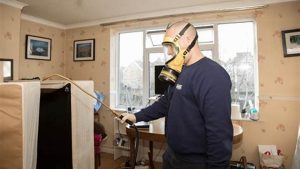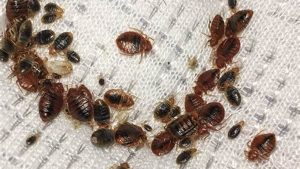Ever wondered how long those pesky bed bugs can survive when sealed in a plastic bag? It’s a question that plagues many homeowners dealing with these unwelcome guests. Let’s dive into the world of bed bugs and explore this intriguing topic.

Understanding Bed Bug Biology
Before we tackle the plastic bag question, it’s crucial to understand these tiny terrors. Bed bugs are resilient little creatures, adapting to various environments with ease.These nocturnal nuisances are small, light brown insects that feast on human blood.
Surprisingly, they can survive for several months in ideal conditions without a meal. Talk about staying power! Their ability to go long periods without feeding makes them particularly challenging to eliminate.
The Plastic Bag Strategy
Now, onto the million-dollar question: can sealing bed bugs in plastic bags effectively control them? Well, it’s not quite that simple.Sealing infested items in plastic is a common tactic in the battle against bed bugs. It’s often used to isolate laundry, non-washable items, and even luggage.
The idea is to create a “plastic prison” that cuts off the bugs’ access to food and, eventually, air.However, don’t expect instant results. Bed bugs are surprisingly hardy and can survive for quite some time in these sealed environments.
Factors Affecting Survival in Plastic
Several factors come into play when determining how long bed bugs can last in a sealed plastic bag. It’s not just about trapping them; it’s about creating conditions that are inhospitable enough to eliminate them.Temperature plays a significant role. Bed bugs and their eggs can’t survive temperatures over about 120 degrees Fahrenheit. So, if you can get the contents of the bag hot enough, you might not need to wait long at all.
Humidity and oxygen levels also impact survival rates. The quality and thickness of the plastic bag matter too. Thicker, heavy-duty bags with tight seals tend to be more effective.The life stage of the bed bugs is another crucial factor. Adults can survive longer without feeding compared to nymphs.
How Long Can They Really Last?
So, what’s the verdict? How long can these resilient pests actually survive in a sealed plastic bag?Unfortunately, there’s no one-size-fits-all answer. Under ideal conditions (for the bugs, not for us!), bed bugs can potentially survive for several months in a sealed plastic bag.Adult bed bugs have been known to live for approximately five months without feeding. That’s a long time to wait for your favorite sweater to be bug-free!
Effective Use of Plastic Bags
While sealing items in plastic bags isn’t a foolproof solution, it can be part of a broader bed bug control strategy. Here are some tips for using this method effectively:Use heavy-duty, sealable plastic bags or vacuum-seal bags for best results. These create a tighter seal, reducing the bugs’ chances of survival.Label the bags and remove as much air as possible. This helps track how long items have been sealed and creates a more hostile environment for the bugs.
Consider combining the plastic bag method with heat treatment. Placing sealed bags in direct sunlight or a hot car can speed up the process.Remember, patience is key. Items may need to remain sealed for several months to ensure all bugs and eggs have died.
Beyond the Bag: Comprehensive Bed Bug Control
While plastic bags can be useful, they shouldn’t be your only line of defense against bed bugs. A multi-faceted approach is often necessary for effective control.Professional pest control services can offer more robust solutions, including heat treatments and specialized insecticides. These methods can be more effective and efficient than DIY approaches.
Don’t forget about non-chemical control methods too. Regular vacuuming, steam cleaning, and proper laundering of infested items can all play a role in bed bug management
| Category | Details |
|---|---|
| Lifespan in Sealed Plastic Bags | Several months; Adults: ~5 months |
| Factors Affecting Survival | Temperature, Humidity, Oxygen levels, Quality of plastic, Life stage |
| Alternative Control Methods | Heat treatment (highly effective), Chemical treatments (variable effectiveness), Professional pest control (best but expensive), DIY methods (less effective) |
Wrapping It Up
Dealing with bed bugs can be a frustrating and time-consuming process. While sealing items in plastic bags can be part of your strategy, it’s important to remember that it’s not a quick fix. Patience, persistence, and a comprehensive approach are key to winning the battle against bed bugs. And remember, when in doubt, don’t hesitate to call in the professionals. After all, a good night’s sleep free from worrying about bed bugs is priceless!
Frequently Asked Questions
Q: How long can bed bugs survive in a sealed plastic bag?
A: Adult bed bugs can survive for approximately 5 months in a sealed plastic bag under normal room temperature conditions. However, this can vary depending on factors like temperature, humidity, and the bug’s life stage.
Q: Will sealing bed bugs in a plastic bag kill them?
A: Simply sealing bed bugs in a plastic bag won’t kill them quickly. They can survive for several months without food. However, combining this method with extreme temperatures (heat or cold) can be more effective.
Q: Can bed bugs escape from sealed plastic bags?
A: Bed bugs cannot chew through plastic bags. However, if there are any holes or tears in the bag, they can escape. It’s crucial to use high-quality, thick plastic bags and ensure they are properly sealed.
Q: What’s the fastest way to kill bed bugs in a sealed plastic bag?
A: The quickest methods are:
- Heat treatment: Expose the sealed bag to temperatures above 120°F (49°C) for at least an hour.
- Cold treatment: Place the sealed bag in a freezer at 0°F (-18°C) for at least 4 days.
Q: Are plastic bags effective for controlling bed bug infestations?
A: While plastic bags can help isolate infested items and prevent spread, they should not be relied upon as the sole method for bed bug control. They are most effective when used as part of a comprehensive treatment plan.
Q: What items should I seal in plastic bags if I suspect bed bugs?
A: Seal clothing, bedding, and other fabric items that may be infested. Also, consider sealing books, electronics, and other items that can’t be easily washed or heat-treated.
Q: How long should I keep items sealed in plastic bags?
A: To ensure all bed bugs and eggs are dead, it’s recommended to keep items sealed for at least 5-7 months if using room temperature alone. However, this time can be significantly reduced if combining with heat or cold treatments.


